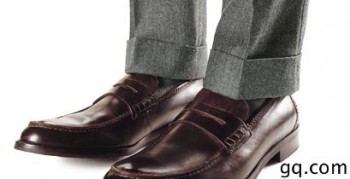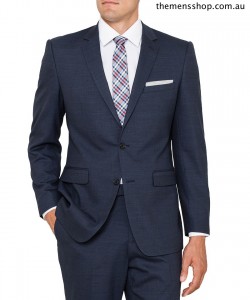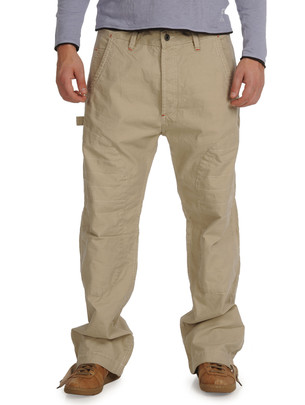Welcome back, gentlemen. Today, we continue the conversation about the most important piece of clothing in the gentleman’s closet: the suit. Take a moment to review last week’s introduction, and then let’s discuss:
How to wear a suit
Wearing a suit seems simple enough, but there are some details the gentleman attends to, demonstrating his command of the outfit and allowing for his personal style to shine. Suits are specifically designed to flatter the male figure, but this magic only works when the suit is chosen wisely and worn correctly. There are two main factors that determine the visual effect of the suit: cut and fit.
“Cut” refers to the way the tailor has cut the fabric to drape on the body. Cut has a rather direct correlation to price because the cut is a reflection of the skill and care of the tailor, as well as how specifically targeted the suit is to a certain body type. The lower-priced suits in many men’s departments are cut to fit as many men with as little alteration as possible. The result for the would-be-stylish gentleman is a box-shaped, oversized, lifeless garment.
The truth is that nearly every man in America wears a suit that is cut too big for his body. Comfort has come to be equated with looseness. Yet loose clothing looks bad, and looking bad destroys confidence. A man without confidence is a man without comfort. The gentleman must redefine the way he thinks about comfort.
The Modern Urban Gentleman understands that not all gentleman are built the same. Nonetheless, a slimmer cut will flatter many gentlemen who would not expect themselves to fall into the “slim” category. The ideal jacket cut will taper slightly from the shoulders through the torso; the perfect pant will hug, not squeeze, the thigh without restricting motion, and will hang from the knee without flaring.
Once the gentleman has tried on several cuts of suit, he turns his attention to fit. In finding the right fit for a suit jacket, focus on three things. First, the shoulders of the jacket should end at the point of the gentleman’s shoulder. Too often, the suit shoulders extend beyond the silhouette of the body, creating the box effect.
Second, button the jacket. The gentleman should be able to slide his hand between this sternum and the jacket — no more, no less. Too loose: the jacket will hang sloppily; too tight, the fabric will be pinched, creating a seam across the waist.
Finally, the gentleman should stand tall and let his arms hang at his side. His fingers should naturally curl up under the tails of the jacket. This length corresponds to a jacket that just covers the rear, allowing the back vents (you may have two vents, or one center vent) to fall just so when seated. The correct jacket length also enhances the “window” of the shirt and tie, and allows the buttons to close over the bottom of the tie and belt.
The fit of the suit pants is a peeve of this Modern Urban Gentleman. Most men understand that pants are sized according to waist and inseam, but most men are egregiously lying to themselves about their true dimensions.
Believe me when I say the Modern Urban Gentleman understands how psychologically difficult it can be to admit the waist is a 36, not a 34. But also trust me when I say that wearing the right size makes the gentleman look thinner than squeezing into too-small pants does. The muffin top is not exclusive to women, and feeling bound up all day will ameliorate many of the swagger effects of wearing a suit.
Another sticking point for many men is the inclination to wear suit pants in the same way they wear jeans: around the hips. Let’s be clear: casual wear should sit around the hips; I am not asking anyone to change their ways on that point. But suit pants sit higher. This is non-negotiable, and may alter the size of pants you buy. The jacket and pants work in tandem, and pants that sit too low create a ripple effect, both up and down the body, that destroys the entire package. The gentleman’s pants sit above the hips, loosely enough not to bind, but snugly enough that a belt is unnecessary (though one should always be worn).
Finally, most visually jarring of all men’s fashion faux pas: the pooling pant leg. The fabric of the pant leg should never be allowed to gather and lay on the top of the shoe. When the gentleman stands, his pant leg should brush the shoe; when he sits, the pant leg should expose several inches of the stylish sock beneath (a topic for another day).
Beyond cut and fit, the gentlemen must be aware of one key point in order to maximize the visual appeal of the suit. Most suit jackets on American men have two or three buttons to fasten the suit over the abdomen. It may come as a surprise to many, but these buttons are functional, not merely decoration. When a gentleman is standing, his suit jacket is buttoned; when he sits, it is unbuttoned.
The buttoned suit jacket streamlines the upper body and blends it seamlessly into the overall effect of the suit. A closed jacket is also practical; it keeps the necktie in place, especially on a windy day. The buttoned jacket also provides a bit of cover for a necktie that is not tied to the perfect length (the tip of the tie resting just over the top edge of the belt buckle, but more on that in another column). An open jacket draws the eye to any unsightly cushioning around the midsection; the necktie, perched on the shelf of the beer belly, only exaggerates the effect.
And there you have it, gentlemen: the basics of the suit. As the gentleman’s budget grows, he can begin to consider more luxurious details, such as hand-stitching, full-canvas lining, and thread count. But for now, suit shopping shall no longer cause undue consternation.
In the coming weeks, the Modern Urban Gentleman will discuss the other elements, including the shirt, tie, pocket square, and more, that will complete the look. But don’t waste any time before getting to your neighborhood suit shop.
And remember: no pleats.


